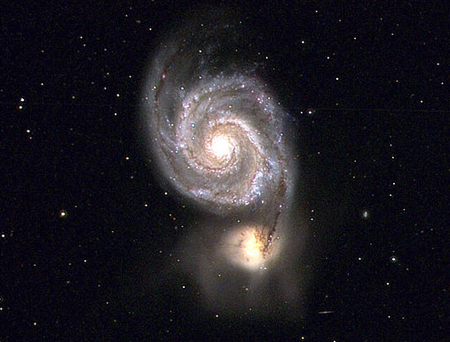About the most common question I hear from new telescope owners, or those looking at buying a specific model, is "What can I see with this telescope?"
There are some books that are designed to answer just that question. First, there's the Night Sky Observer's Guide,
Volume 1 and
Volume 2 by Kepple and Sanner.




These books are extremely comprehensive. They have an introduction to each constellation that lists the showpiece objects of that constellation. They list them both as the best deep sky objects and the list the best binocular objects, which often make excellent objects in telescopes of any size. They provide an overall orientation chart for each constellation, and several finder charts for each constellation with individual objects marked relative to the nearby stars.
The range of telescopes covered goes from 60mm (2.4 inches) of aperture on up to 18 inches and beyond. Descriptions of the objects give you an idea of what the object should look like, and how well it will appear in your scope. Many of the objects have drawings and photos to give you an idea of what the object will look like, as well.
My only complaints with these books is that they are heavy, and that the finder charts are often confusing. The orientation of the finder charts varies, the orientation is often different from their parent chart. This gets confusing whenno reference for direction is given with the chart--you have to go from chart to chart, often across several different pages, to get an idea of what the orientation of the small chart is compred to the big one. In the dark with a red flashlight this gets to be a pain. It's better to use the books at home before observing, put the likely sounding objects on a list, then use your favorite star charts to locate them out under the stars.
Volume 1 covers the Autumn and Winter constellations. That is, it covers those constellations that cross the zenith at midnight during northern hemisphere autumn and winter. Volume 2 covers the Spring and Summer stars. Specifically:
Volume 1: Autumn and Winter Constellations:
Andromeda, Aquarius, Aries, Auriga, Camelopardis, Cancer, Canis Major, Canis Minor, Cassiopeia, Cepheus, Cetus, Columba, Eridanus, Fornax, Gemini, Lacerta, Lepus, Lynx, Monoceros, Orion, Pegasus, Perseus, Pisces, Piscis Austrinus, Puppis, Pyxis, Sculptor, Taurus, Triangulum
Volume 2: Spring and Summer Constellations:
Antlia, Aquila, Bootes, Canes Venatici, Capricornus, Centaurus, Coma Berenices, Corona Australis, Corona Borealis, Corvus, Crater, Cygnus, Delphinus, Draco, Equuleus, Hercules, Hydra, Leo, Leo Minor, Libra, Lupus, Lyra, Microscopium, Ophiuschus, Sagitta, Sagittarius, Scorpius, Scutum, Serpens Caput, Serpens Cauda, Sextans, Ursa Major, Ursa Minor, Virgo, Vulpecula
Constellations with particularly attractive or interesting stars have those listed at the start of each constellation's chapter.
There's another book I really like for finding out what I can see that I'll cover in my next posting.






